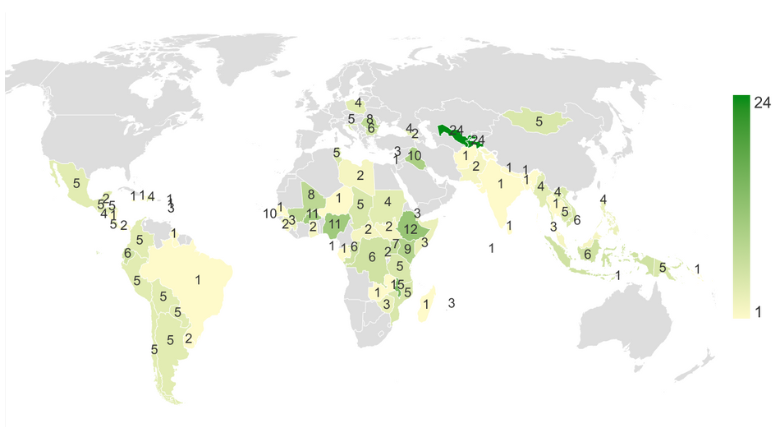Introduction
The COVID-19 pandemic disrupted lives and livelihoods across the developing world. To track its effects and inform policy responses, in 2020 the World Bank and partners launched an unprecedented data collection effort using high-frequency phone surveys (HFPS). With over 400 rounds in more than 100 countries, the COVID-19 phone surveys are now one of the largest publicly available sources of data on household socio-economic well-being during the COVID-19 crisis.
The COVID-19 Household Monitoring Dashboard is a user-friendly tool for accessing and analyzing phone survey data. It offers over 100 nationally representative indicators on topics like food security, employment, income loss, access to safety nets, and household coping strategies, among many others. The dashboard provides researchers, policymakers, and the public with comprehensive and timely information on the impact from 2020 until late 2022.
Explore the Dashboard
Background
At the onset of the COVID-19 pandemic, traditional face-to-face data collection efforts came to a halt due to government measures and health risks. According to a joint World Bank-UN survey of National Statistical Offices (NSOs), nearly 96 percent had partially or fully stopped face-to-face data collection in May 2020. This severely limited access to data at a time when policymakers needed timely and relevant information to save lives and support livelihoods. While the social and economic impacts of the global pandemic are cross-cutting, the effects were particularly damaging for the poor and vulnerable, with potentially devastating and long-lasting consequences.
The World Bank high-frequency phone surveys were designed to fill this information gap, helping to monitor countries as they moved through different stages of the pandemic. Phone surveys were an attractive option given their track record of providing rapid and reliable data in low- and middle-income countries during crises.
Overview of Household Monitoring Systems using Phone Surveys
The World Bank has significant experience using phone surveys to monitor welfare in many circumstances, including in times of crisis and in response to emergencies. As documented in the book Data Collection in Fragile States: Innovations from Africa and Beyond, phone surveys were successfully rolled out during the Ebola crisis and have been used to monitor the impact of extreme climate events. The first initiatives, Listening to Africa and Listening to LAC, date back to 2011. While in most cases these surveys have been short-lived, some of them have been running for many years. For example, Listening to Tajikistan, a panel survey, has been under implementation for more than five years and over 62 survey rounds.
Learn more about the High-Frequency Phone Surveys
The Poverty and Equity Global Practice (GP) and the Development Data Group (DECDG), together with many other World Bank Global Practices and National Statistical Offices (NSOs), partnered to develop survey tools and technical guidelines to design and implement phone survey systems:
- Overview of the initiative
- Guidelines on sampling for high-frequency phone surveys
- A questionnaire template, with core and optional modules, accompanied by an overview and a manual, and
- Guidelines on the implementation of Computer-assisted telephone interviewing (CATI) -based data collection.
Last Updated: May 26, 2023

